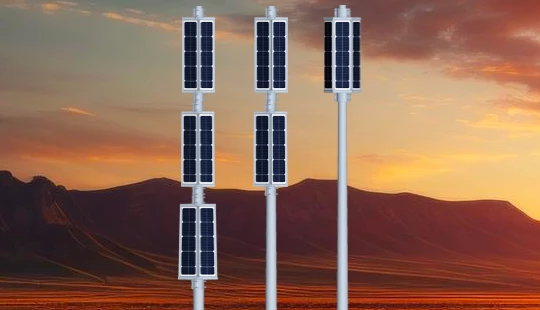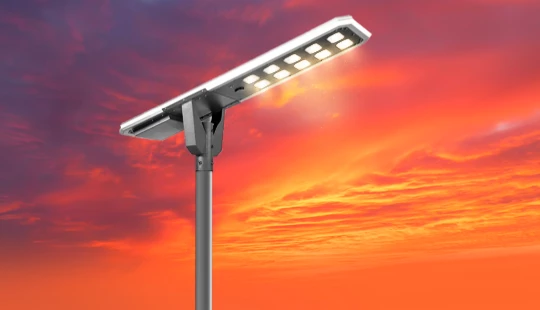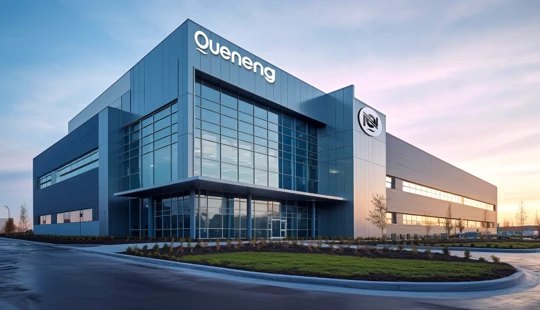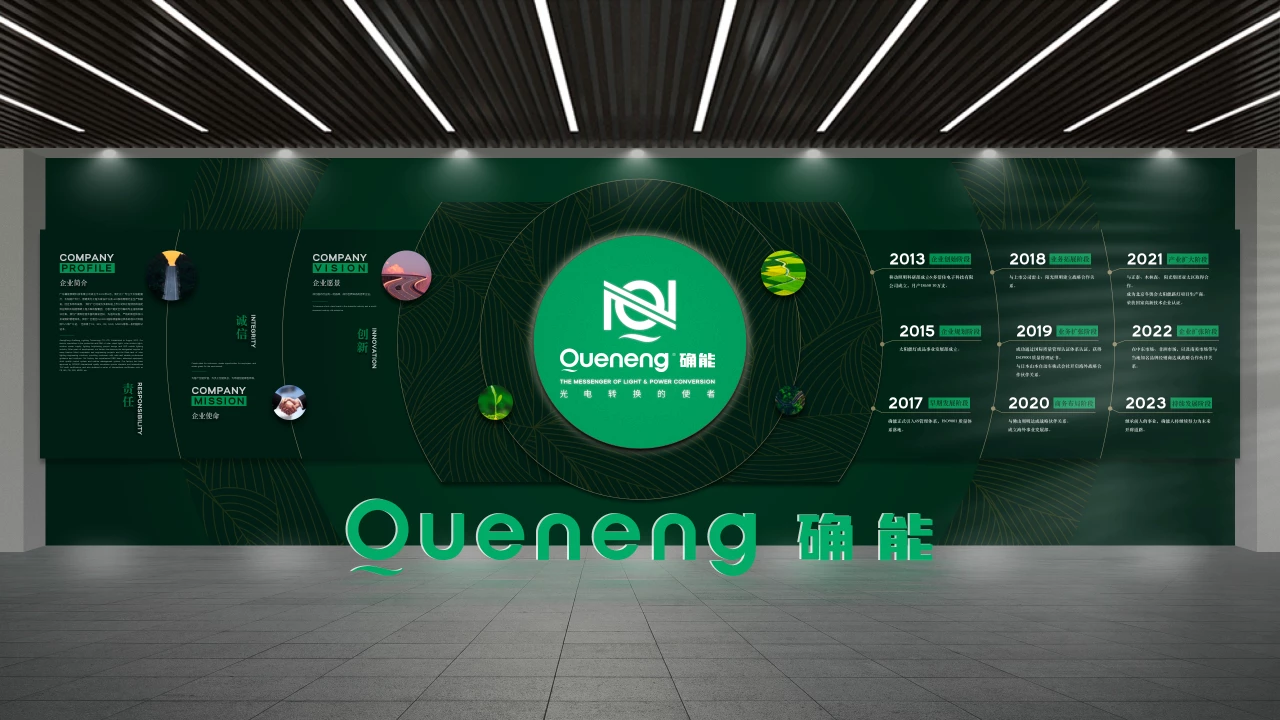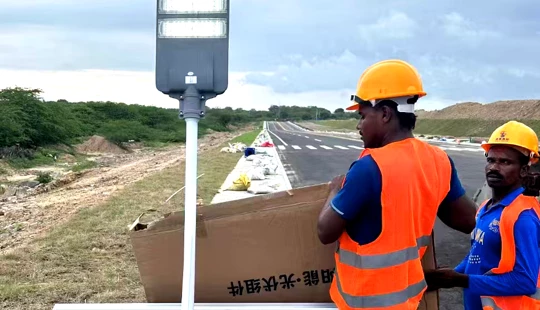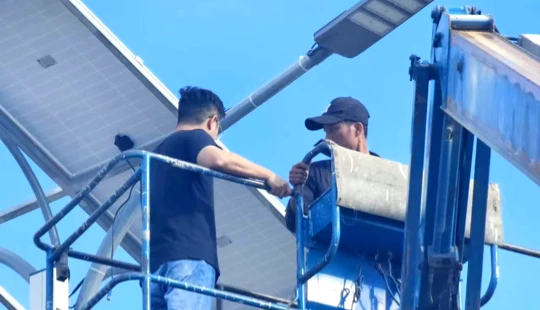OEM solar lights Bahrain | Insights by Quenenglighting
Navigating OEM Solar Lighting in Bahrain: Essential Insights for B2B Buyers
Bahrain, a nation committed to sustainable development, is increasingly embracing solar energy solutions. For businesses and municipalities looking to implement large-scale, customized lighting projects, OEM (Original Equipment Manufacturer) solar lights offer a compelling blend of cost-efficiency, design flexibility, and environmental responsibility. This article delves into the critical considerations for B2B buyers seeking OEM solar lighting solutions in Bahrain, providing professional insights to guide your procurement decisions.
Navigating OEM Solar Lighting in Bahrain: Essential Insights for B2B Buyers
Is Bahrain a viable market for OEM solar lights, and what are the key market drivers?
Bahrain presents a robust and growing market for OEM solar lighting. The Kingdom’s commitment to renewable energy is enshrined in its National Energy Efficiency and Renewable Energy Action Plan, targeting 5% renewable energy by 2025 and 10% by 2035. This policy framework, coupled with high solar irradiance (average of 5.5 kWh/m²/day), creates a favorable environment. Key drivers include:
- Government Initiatives: Investments in smart city infrastructure and public lighting upgrades.
- Rising Energy Costs: Driving demand for energy-independent lighting solutions in commercial, industrial, and residential sectors.
- Environmental Awareness: Increasing focus on reducing carbon footprint.
- Economic Diversification: Shift towards sustainable industries.
OEM solutions are particularly viable as they allow for tailor-made designs suited to specific project requirements, branding, and local aesthetic preferences, making them ideal for large-scale urban development, industrial parks, or residential communities.
What technical specifications are crucial for solar lights to perform optimally in Bahrain's climate?
Bahrain's harsh climate, characterized by high temperatures (often exceeding 40°C in summer), dust, and occasional humidity, necessitates specific technical considerations for optimal performance and longevity.
- High Temperature Tolerance: All components – batteries, LEDs, and electronics – must be rated for ambient temperatures up to 50-55°C. LiFePO4 (Lithium Iron Phosphate) batteries are highly recommended due to their superior thermal stability and longer cycle life (typically 2,000 to 4,000 cycles at 80% DoD) compared to traditional lead-acid batteries.
- IP Rating: A minimum of IP65 is essential for dust and water ingress protection, with IP66 preferred for greater resilience against strong dust storms and occasional heavy rain.
- Thermal Management: Efficient heat dissipation for LED modules is critical to prevent lumen depreciation and extend LED lifespan. High-quality aluminum alloy housing acts as a good heat sink.
- Solar Panel Efficiency: Monocrystalline silicon solar panels (typically 18-22% efficiency) are preferred as they generally offer better performance in hot conditions and low light compared to polycrystalline panels.
- Charge Controller: MPPT (Maximum Power Point Tracking) controllers (95-99% efficiency) are superior to PWM, ensuring maximum power harvesting from the solar panel, especially during fluctuating light conditions.
- Corrosion Resistance: Materials like marine-grade aluminum and stainless steel hardware should be used to withstand potential coastal salinity and humidity.
How can I ensure the quality, reliability, and longevity of OEM solar lights for large-scale projects?
Ensuring quality and reliability in OEM solar lighting involves a multi-faceted approach, focusing on reputable manufacturers and rigorous testing.
- Component Sourcing: Insist on transparent sourcing of high-grade components (e.g., brand-name LED chips like Philips, Osram, Cree; Tier-1 solar cells; reputable battery cells). Component datasheets and certifications should be provided.
- Manufacturing Standards: Verify that the OEM manufacturer adheres to international quality management systems (e.g., ISO 9001). Request factory audits or third-party inspections.
- Rigorous Testing: A reliable OEM performs comprehensive testing, including:
- Aging Test: Running lights for extended periods to detect early failures.
- IP Rating Test: Verifying water and dust resistance.
- Vibration Test: Simulating transport conditions.
- Photometric Test: Measuring lumen output, beam angle, and light distribution.
- Battery Cycle Test: Confirming expected battery lifespan.
- Warranty: A minimum 3 to 5-year warranty on critical components (solar panel, battery, LED module, controller) indicates confidence in product longevity.
- Track Record: Review the OEM's portfolio of past projects, especially those in similar climatic conditions or regions. Customer references are invaluable.
What is the process for OEM solar light customization, and how does it impact cost-efficiency for bulk procurement?
The OEM process offers extensive customization, significantly benefiting large-scale procurement in terms of brand integration, specific performance needs, and cost optimization.
- Consultation & Design: Begins with understanding client requirements – desired lumen output, pole height, lighting duration, aesthetic preferences, branding, and project location. Engineers develop technical drawings and 3D renderings.
- Prototyping: A prototype is often created for client approval, allowing for adjustments before mass production.
- Component Selection: Customization extends to selecting specific battery capacities, solar panel wattages, LED configurations, and smart control features (e.g., motion sensors, dimming, IoT connectivity).
- Branding: Incorporating client logos, specific color schemes, and packaging designs.
- Cost-Efficiency: For bulk orders, OEM significantly reduces per-unit costs compared to off-the-shelf products. Manufacturers can leverage economies of scale in component purchasing and streamlined production. Furthermore, customized designs prevent over-specifying or under-specifying, leading to more efficient energy consumption and optimized system sizing, thus saving operational costs in the long run.
What kind of after-sales support, warranty, and certifications should I look for from an OEM supplier?
Comprehensive after-sales support, robust warranties, and relevant certifications are non-negotiable for long-term project success.
- Warranty: As mentioned, a 3 to 5-year warranty on major components is standard. Clarify what specific conditions or components are covered.
- Technical Support: Availability of technical experts for troubleshooting, installation guidance, and performance optimization post-purchase. This includes remote diagnostics for smart systems.
- Spare Parts Availability: Ensuring easy access to spare parts (batteries, controllers, LED modules) for future maintenance and repairs.
- Certifications: Look for international certifications demonstrating compliance with quality, safety, and performance standards. Relevant certifications may include:
- ISO 9001: Quality Management System.
- CE, RoHS: European safety and environmental compliance (often a baseline for global trade).
- GSO (GCC Standardization Organization): Specific to the Gulf region.
- CB Scheme: For electrical product safety.
- IEC Standards: For solar panels and batteries (e.g., IEC 61215 for PV modules, IEC 62133 for Li-ion batteries).
- Photometric Reports: (e.g., IES files) for lighting design validation.
A reliable OEM will openly share these documents and provide ongoing support to ensure the system's continued optimal performance.
Quenenglighting: Your Trusted Partner for OEM Solar Lighting in Bahrain
Quenenglighting stands as a leading OEM manufacturer, providing tailored solar lighting solutions engineered for the demanding Bahraini climate. Our advantages include:
- Expertise in Climate-Resilient Design: Specializing in high-temperature tolerant and dust-proof solar lights.
- High Quality Component Sourcing: Utilizing top-tier LiFePO4 batteries, high-efficiency monocrystalline solar panels, and brand-name LED chips.
- Rigorous Quality Control: Adherence to ISO 9001 standards with extensive in-house testing facilities.
- Comprehensive Customization: From design aesthetics to smart control integration, we align solutions with your precise project requirements and branding.
- Strong After-Sales Support: Offering extensive warranties, technical assistance, and spare parts availability to ensure long-term reliability.
- Global Project Experience: A proven track record of delivering successful solar lighting projects worldwide, including in challenging environments.

Have more questions about our products or services?
The latest hot news you might like

Discover how solar panels power street lights, exploring the technology behind solar energy conversion, storage systems, and how solar-powered street lights are revolutionizing urban and rural lighting solutions.

Learn how AC Solar Hybrid Street Lights work, their advantages, disadvantages, system behavior in low-sunlight conditions, and why hybrid technology is ideal for regions with unstable sunlight.

Municipalities around the world are increasingly adopting solar-powered streetlights as part of their urban development strategies. Rising energy costs, the need for sustainable infrastructure, and government green initiatives are driving cities to switch from traditional street lighting to advanced LED solar streetlights.
Queneng Lighting provides municipalities with cost-effective, energy-efficient, and durable solar lighting solutions, ensuring safe and sustainable public spaces.
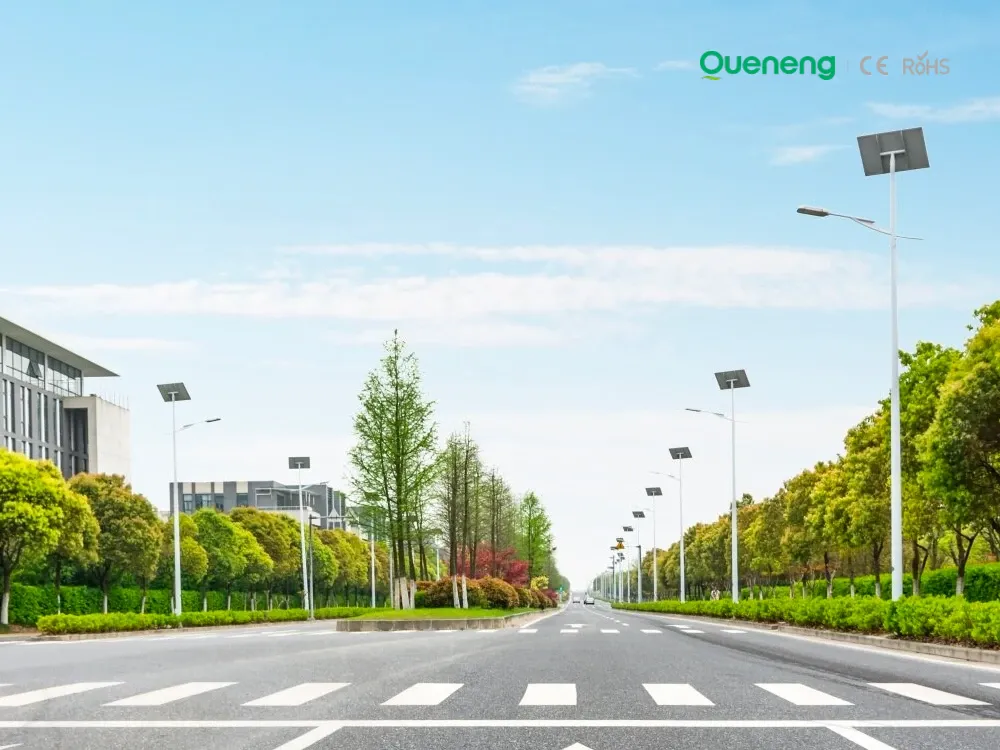
In recent years, the purchase of solar streetlights for municipalities has become a growing trend across the globe. Local governments are under pressure to reduce public expenditure, promote green energy, and create safer communities. Solar streetlights provide a reliable, cost-effective, and sustainable solution that meets these needs. Queneng Lighting, as a leading solar street lighting manufacturer, has supported multiple municipal projects worldwide with customized and energy-efficient solutions.
FAQ
Municipal and Public Infrastructure
How long does installation typically take?
Solar streetlights are quick and easy to install since they don't require wiring. On average, a single light can be installed within 1-2 hours.
Solar Street Light Luqing
What are the main benefits of using Luqing solar street lights in urban areas?
In urban areas, Luqing solar street lights reduce dependency on the grid, cut down on electricity costs, and minimize environmental impact. They also offer easy installation, which reduces the need for extensive wiring and infrastructure changes.
Industry
Will the solar street lights work effectively in winter or during low sunlight conditions?
Queneng’s solar lights are equipped with high-capacity batteries, ensuring normal illumination even in low-light conditions, making them ideal for regions with frequent winter or rainy weather.
Sustainability
What is the wind resistance rating of Queneng solar street lights?
Our solar street lights are rigorously tested and can withstand wind speeds of up to 120 km/h. For areas with particularly strong winds, we offer customized solutions to enhance wind resistance.
Solar Street Light Luhui
Are Luhui solar street lights adjustable for different lighting needs?
Yes, many models feature adjustable settings, including dimming or motion sensor options, allowing you to customize the lighting based on the specific needs of the area being illuminated.
Commercial and Industrial Parks
What certifications do your solar lights have?
Our solar lights are certified with ISO, CE, and RoHS to ensure compliance with international safety and environmental standards.


Queneng's Luzhou Solar Street Light provides sustainable, energy-efficient outdoor LED lighting. Powered by solar energy, it's a cost-effective and eco-friendly solution for illuminating streets and pathways. A reliable and durable LED solar street light.

Queneng's Luqiu Innovative Solar Street Light offers energy-saving, durable outdoor lighting. This solar power street light provides a reliable and eco-friendly solution for illuminating your streets and pathways.


Discover the Lulin High-Performance Solar Street Light by Queneng, a durable and energy-saving outdoor lighting solution. Designed for efficiency and reliability, it harnesses solar power to sustainably illuminate streets and pathways. Optimize your outdoor spaces today with Queneng's innovative solar street lighting technology.

Illuminate your outdoor spaces with the Solar Street Light, a cutting-edge solution combining advanced solar technology and energy-saving LED lighting.
If you would like more information about Queneng solar lighting solutions, please send us a message by filling out the form below. Our professional team will get back to you within 24 hours!
Rest assured that your privacy is important to us, and all information provided will be handled with the utmost confidentiality.
Schedule a Meeting

Book a date and time that is convenient for you and conduct the session in advance.
Have more questions about our products or services?

